Linsoul’s very own foray into the headphone market, ThieAudio has been launching new products for a while now – starting with the full-size planars Phantom and now continuing with in-ear headphones. A line-up that seems to have some common features, namely the relaxed and “safe” signature. This approach was used in tuning the ThieAudio Voyager 3, their entry-level earphones in the Voyager line, as well.
Disclaimer: this unit comes courtesy of Linsoul, who sent it to me for free. The earphones retail for $159.
TL;DR: recap
| Pros |
Cons |
| Comfortable
Fun, engaging U-shaped signature Tuning switches |
Cable can be heavy
Limited bass extension |
Rating: 8.3/10
Packaging & Accessories
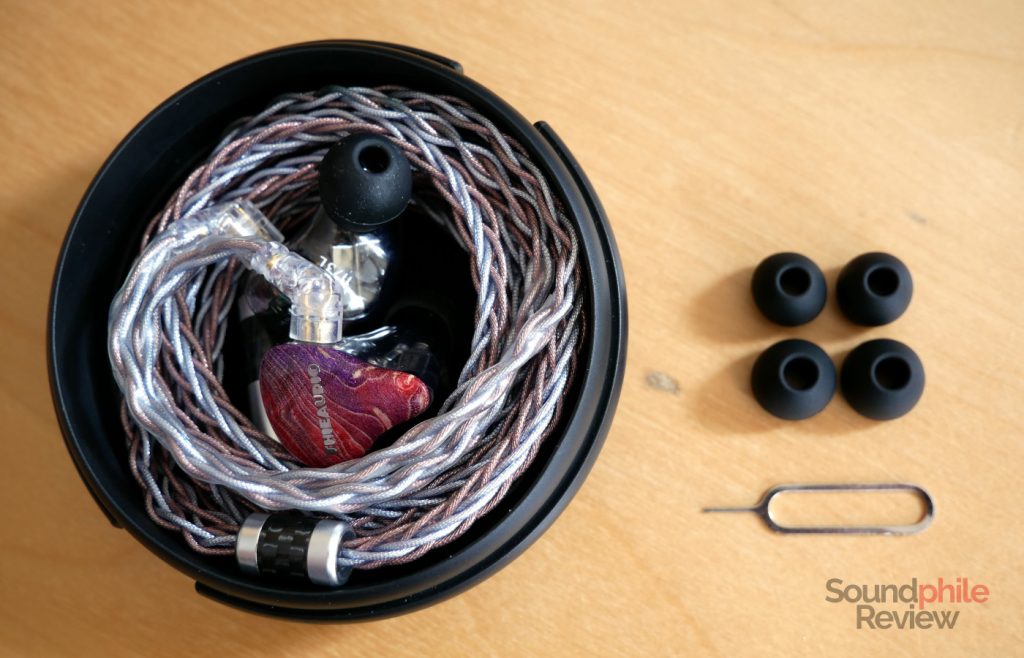
The ThieAudio Voyager 3 came in their metal case (one similar to the TRN-labeled one in my best earphone cases article) and that included a tool like those you use to remove SIM cards from phones, as well as a set of three silicone tips. The SIM removal tool is actually there so that you can use the switches on the shells, as they’re too small even for the tip of a pen.
Design & Build
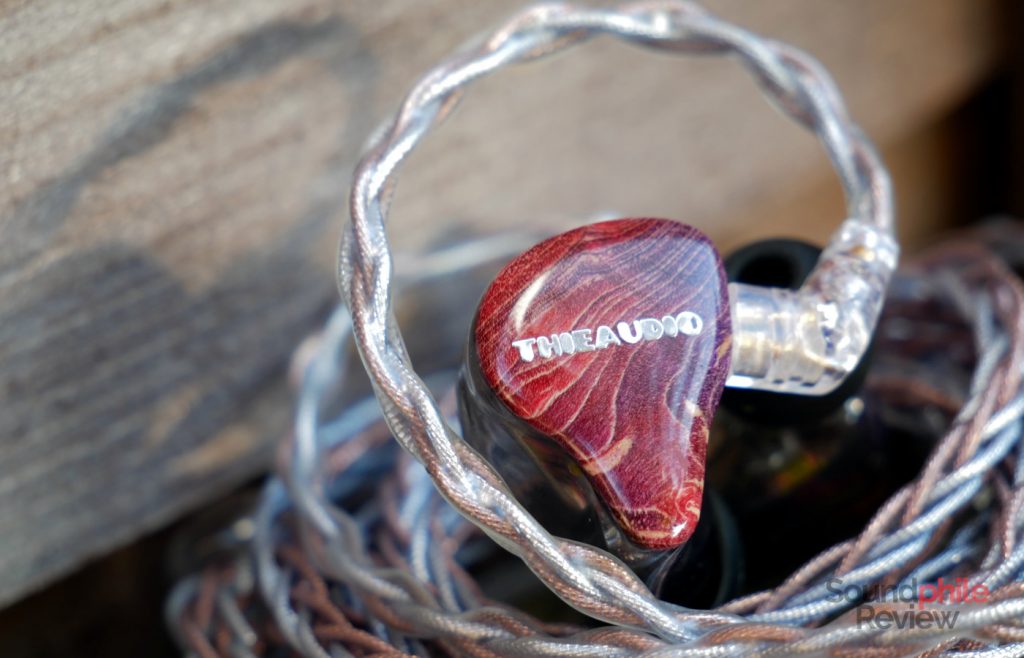
The ThieAudio Voyager 3 is not really original when it comes to design: the shape is the usual one most IEMs use these days – they are similar to the Peacock Audio P1, BGVP DH3, CCA C10 and many others. The novelty is in the colours: the shell itself is transparent, showing the internal components with great clarity, while the faceplate is wood-like in pattern. In my case it is reddish in colour with some purple added in and the ThieAudio logo in silver.
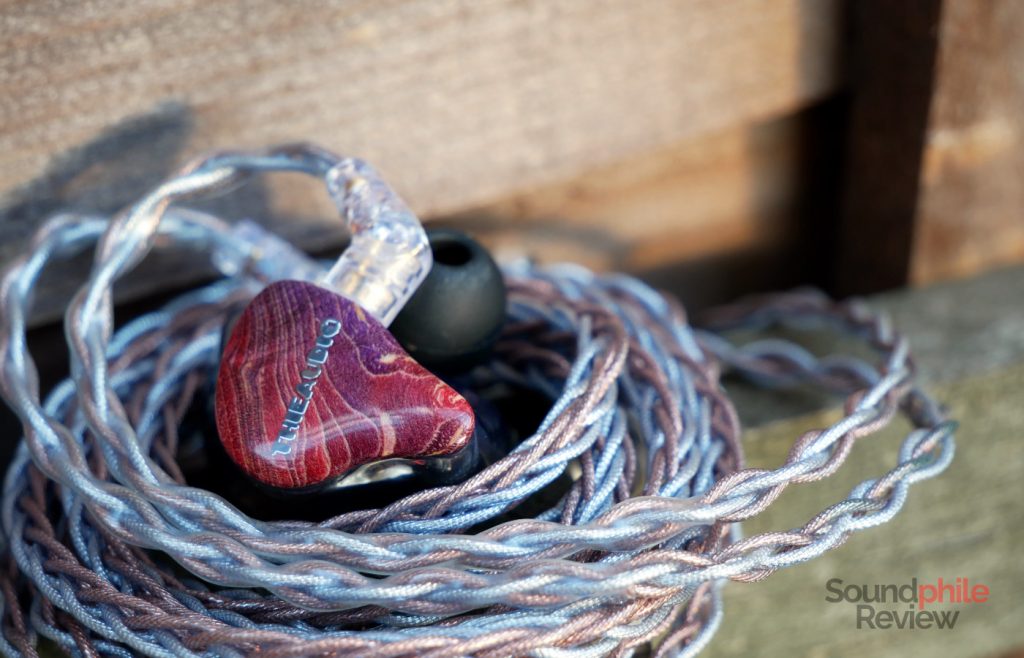
Build quality appears to be quite good, without any apparent flaw in how the earphones are built. The plastic appears solid and the assembly is done well.
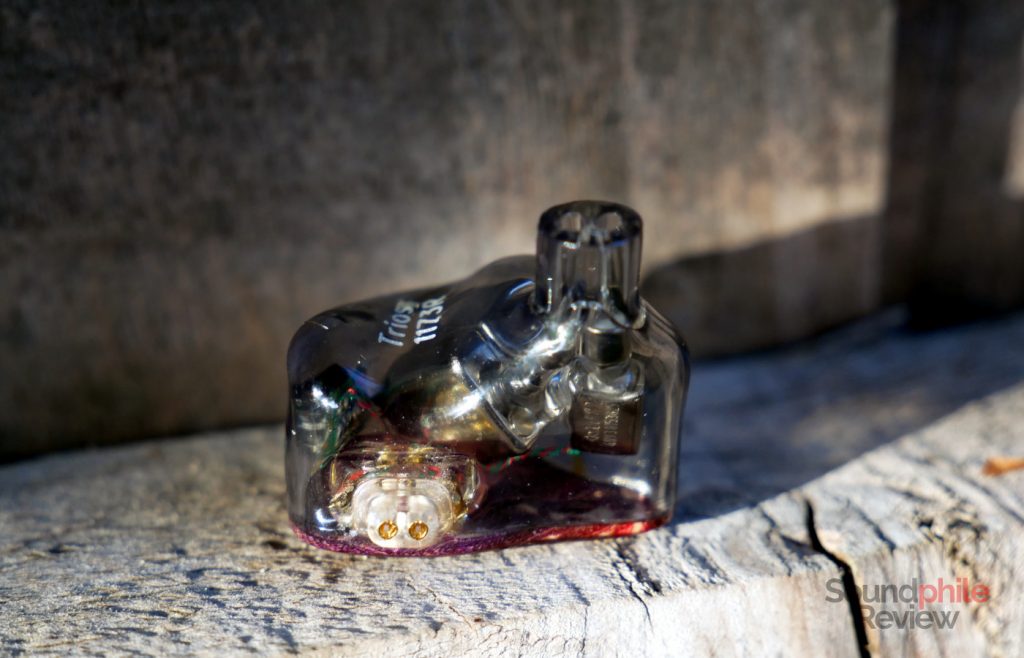
The comfort is quite good, in no small part thanks to the fact that this shell shape has now been widely tested with hundreds of models that share it. It’s not original, but it works quite well!
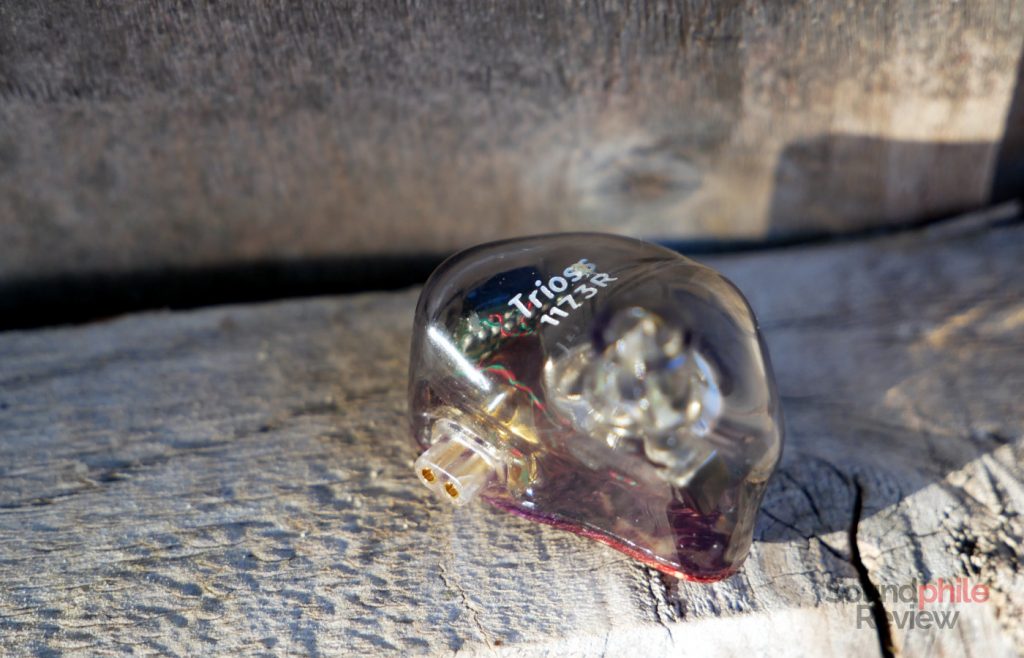
Isolation is decent: you can still hear the surroundings, but sounds coming from outside are reduced in volume by a moderate amount. In other words, I find that the Voyager 3 are ineffective when it comes to shielding from loud noise (say, a train or an especially loud housemate), but they work well with moderate-intensity noises.
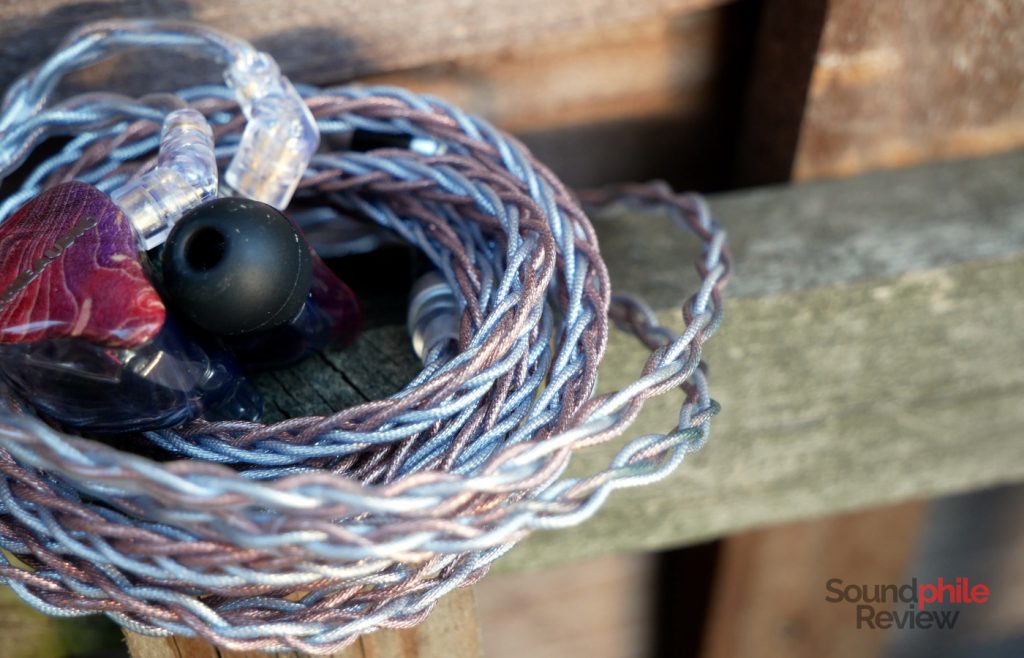
The cable is similar in appearance to that bundled with the BGVP DM7: it has the same silver and copper colours and the feeling is actually similar, too. It’s soft and malleable, and even a bit heavy overall, but enjoyable. It also has little microphonics, so I could use it while walking around without issues.
Sound & Specs
I tested the ThieAudio Voyager 3 using a Burson Audio Playmate, a FiiO BTR3K and a Shanling M2X. They all reproduced the same files, mostly comprised of FLACs in 16 bit / 44.1 kHz.
ThieAudio Voyager 3 |
| Frequency response | 20 – 20,000 Hz |
| Impedance | 14 Ω |
| Sensitivity | 113 dB |
As it often happens, the number in the name refers to the amount of drivers available. The ThieAudio Voyager 3 therefore have three drivers, all of which are balanced armatures: two Knowles CI-22955 for bass and midrange and one Knowles ED-29869 for treble. The three armatures focus on different areas of the sound thanks to a crossover network: one 22955 produces bass, while the other focuses on midrange; the 29869 armature is used for treble. The low impedance and high sensitivity of the Voyager 3 mean you will be able to drive them with any device, including phones and computers, but it also means the earphones will pick up any noise.
The ThieAudio Voyager 3 opt for a “safe” U-shaped signature which emphasises mid-bass and lower treble. This is a signature that works well with most music out there as the emphasis is limited and adds some colour without distorting the sound.
Bass has a larger-than-neutral appearance, with a larger presence in the mid-bass area than in the sub-bass area. ThieAudio opted for a bass presence that exceeds that of a theoretical neutral tuning, but did not went too far with that: bass has just a light emphasis, which gives it some additional weight in the signature and adds some colour without making it overbearing. Despite using only balanced armatures, the Voyager 3 do have some physicality to their sound. In tracks such as Hagal by Wardruna you can clearly hear the drum’s beat: it’s fast and immediate as one would expect from balanced armatures, but it also has a bit of physicality – each hit on the skin is felt on a physical level. Detail is good, as is layering, but the Voyager 3 lack the finest details and technicalities – something to be expected considering they use a single balanced armature for bass.
Midrange can be described as mostly “safe”, with a relatively neutral tuning that privileges the upper-middle part. You can hear that the mid area has a bump when listening to tracks such as Wardruna’s Ár var alda: the male voices appear like their upper component is emphasised, so they’re a bit more sibilant than they should. Luckily they don’t lack any body, though, as they have enough presence in the lower part to sound full and “proper”. There is, however, this emphasis which makes high-pitched instruments (electric guitars, female vocals, violins, etc) stand out more. From a technical standpoint, midrange is reasonably good: the level of detail is commendable for earphones in the sub-$160 bracket, as is speed (thanks to the use of balanced armatures).
Treble is decently detailed and extended. If you are looking for super-extended or super-detailed treble, the Voyager 3 will not suit your needs, but they’re otherwise pretty good considering the price range they’re in. In fact they offer a good amount of detail that makes cymbals, crashes and similar instruments really pop out, helped in this by the modest emphasis that characterises treble. There is more emphasis on the lower area, then it goes down slightly with the middle area and plunges in the upper part. I would not describe the Voyager 3 as being especially airy or open-sounding, but they have those qualities in a moderate fashion and that helps them sound clean and clear enough.
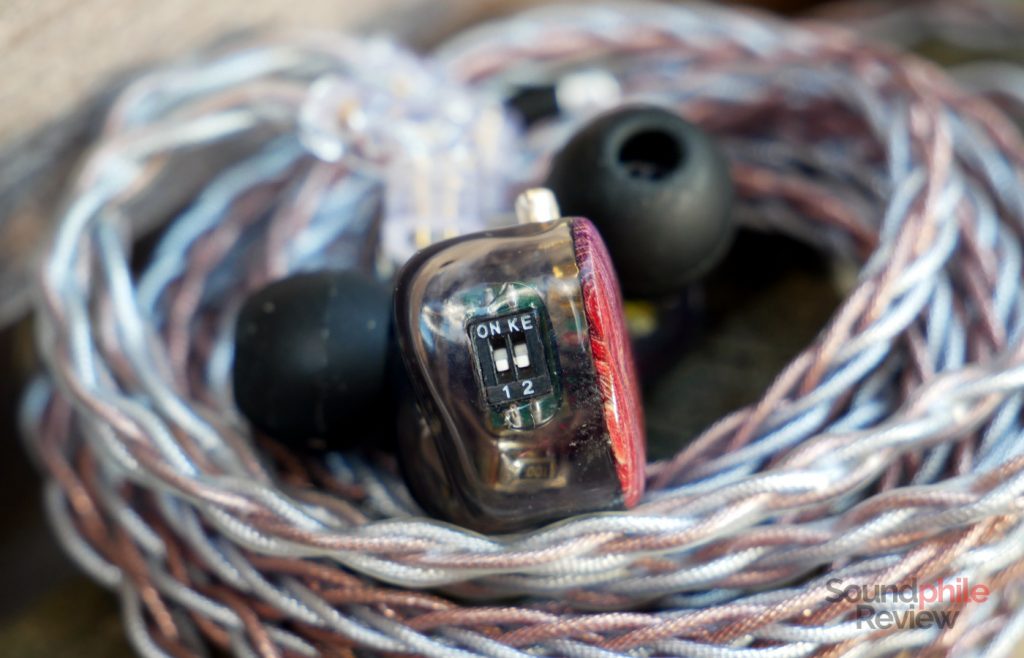
The description you just read is that of the earphones in the “12” configuration, which is with both switches on the “active” (or “on”) position. I consider this the best-sounding signature of the Voyager 3. Here’s a comparison of the different switch configurations (with “1” and “2” indicating that the respective switches are set to “on”):
- 00: the sound is definitely darker, with much less emphasis on the upper midrange and lower treble. Treble is also less extended. This makes it more relaxing in a way, but it also makes the sound more closed and less sparkling. Bass has less emphasis, too, so in a sense this might be more neutral; the thing is the changes are significant and makes the Voyager 3 more mid-bass and lower-midrange focused than anything else.
- 10: this is largely like the previous tuning, with minimal differences that I can’t quite pinpoint.
- 02: this is, in turn, quite similar to the following tuning.
- 12: this is the configuration I based the lengthy, flowery paragraphs above on.
ThieAudio Voyager 3 Comparisons
So let’s compare the ThieAudio Voyager 3 to similarly-priced alternatives:
- ThieAudio Voyager 3 vs ThieAudio Legacy 3: the Legacy 3 appear to me as a more balanced version of the Voyager 3. Bass is less emphasised in the middle area but a bit deeper, with similar speed but with slightly less physicality. Midrange does not have the same emphasis on the upper-middle part, so male voices appear more full-bodied and with less sibilance and focus on the respiration; instruments such as guitars and trumpets are also less prominent in the mix. Treble is more emphasised on the Voyager 3, but with a similar level of detail. Soundstage appears wider to me on the Legacy 3, which also have the upper hand in instrument separation, while imaging is on par. In short, I deem the Legacy 3 a superior choice despite their lower price point.
- ThieAudio Voyager 3 vs Moondrop KXXS: the KXXS offer what many would describe as a neutral signature, especially compared to the Voyager 3. Bass is less emphasised and similarly deep, with less speed but more physicality; it also offers less detail and layering. Midrange does have some emphasis on the upper region, but it’s controlled and coherent so it doesn’t make it sound off – mids do sound more neutral and balanced. Treble is less emphasised on the Moondrop and also slightly more extended, but the Voyager 3 have the upper hand in terms of detail. Soundstage is comparable in size, while the KXXS win in imaging accuracy and the Voyager 3 win in instrument separation.
- ThieAudio Voyager 3 vs Shozy CP: the Shozy CP offer a well balanced signature that’s complemented by a good technical ability. Bass is less emphasised and less deep on them, but it keeps good speed and detail level. Midrange is warmer, in part thanks to the slight emphasis on the lower area and in part thanks to the fact that there is no significant emphasis on the upper area; detail is superior on the Thieaudio, though. Treble is less emphasised and more balanced on the CP, which offer a greater level of detail too. Technical ability is actually better on the Voyager 3: soundstage is wider, imaging is better and instrument separation is much better.
- ThieAudio Voyager 3 vs Tansio Mirai TSMR-3 Pro: both the TSMR-3 Pro and the Voyager 3 offer three balanced armatures and tuning switches. The TSMR-3 Pro offer a similar bass presence, but slightly less emphasis on this area which results in a more balanced signature; detail is slightly better on the Voyager 3. Midrange is definitely warmer on the Thieaudio, which do not have the same spike in the upper midrange as the TSMR-3 Pro; overall the technical ability is similar, with maybe slightly more detail on the latter. Treble is more prominent on the TSMR-3 Pro, with an added accent on the lower area that surpasses the Voyager 3’s. Detail is (again) better on the Tansio Mirai. Where the two differ is technical ability: the Voyager 3 offer a wider and deeper soundstage, more accurate imaging and comparable instrument separation.
Final Thoughts
The ThieAudio Voyager 3 surprised me with their pleasant tuning, good technical ability and good comfort. They’re quite interesting for those who want their music to be more coloured and lively – they’re surely more fun than neutral-sounding earphones. I like the fact that ThieAudio went with the tuning switches in all of their earphones: this allows one to customise the sound to their preference, even if the choices are not many – but I do see value in being able to have a brighter, more sparkling signature and a darker, more bass-focused signature.
Overall, the ThieAudio Voyager 3 are quite a good offering, one that gets almost everything right. They’re not perfect, but they’re definitely more than decent. That’s quite a good thing in my book, as not every earphone has to be revolutionary and disrupting. Sometimes you just want to enjoy what you are listening to and the Voyager 3 allow you to do that.

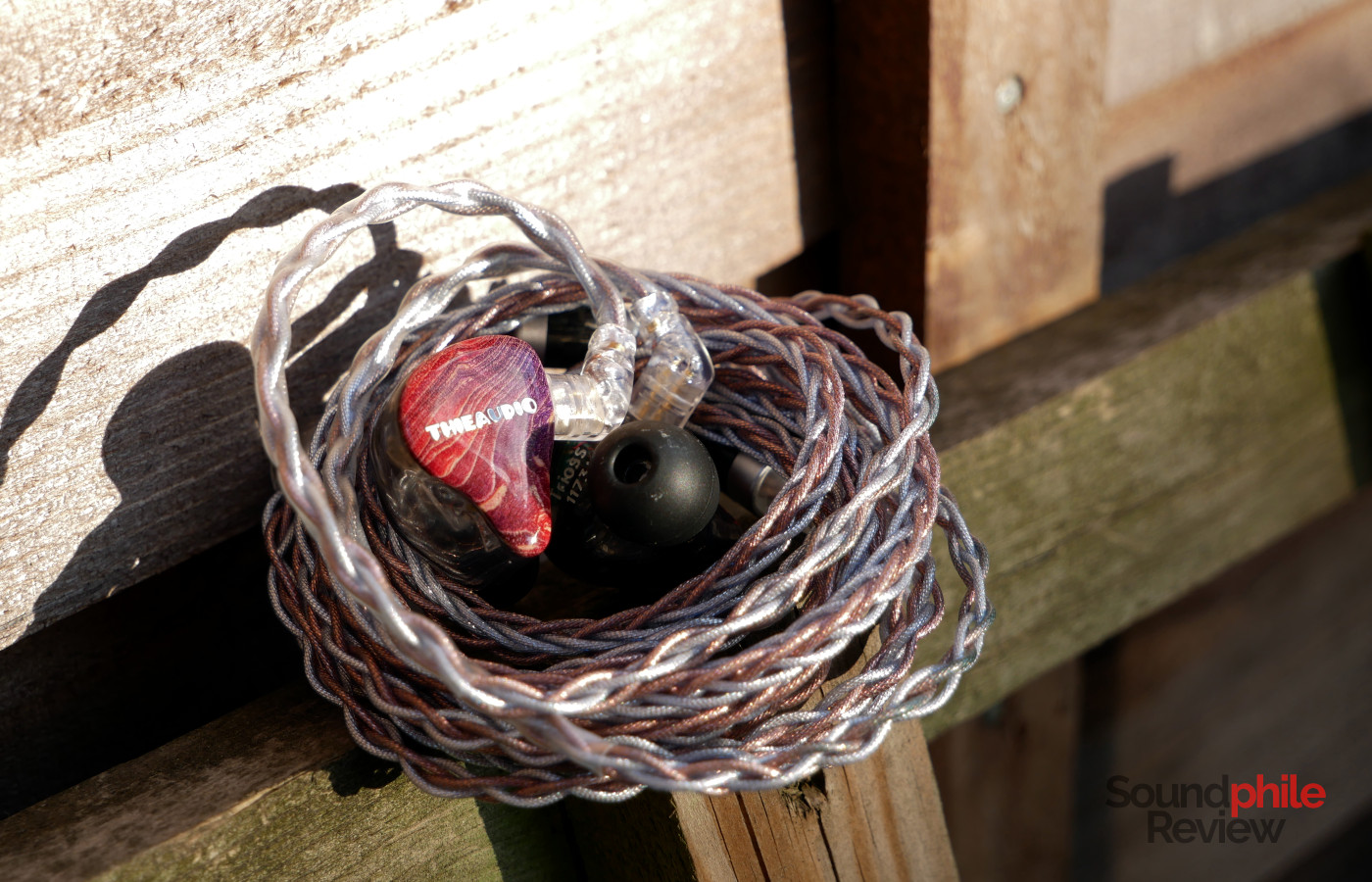



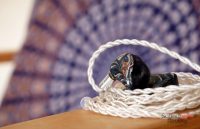
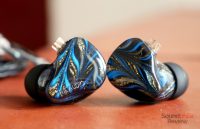


Hi, like your review, can you please compare to tansio mirai tsmr3pro.
Appreciate that 🙂
Hey Shen,
I thought of making that comparison but alas I don’t have the TSMR3 Pro on hand – I’ll be able to compare them in a couple of weeks when I go back to Italy, as the earphones are there.
Thank you appreciate that.
Hi,
Do you have your tsmr3pro back.
Thank you
I updated the review with the comparison with the TSMR-3 Pro!